 |
Matronics Email Lists
Web Forum Interface to the Matronics Email Lists
|
| View previous topic :: View next topic |
| Author |
Message |
icubob(at)gmail.com
Guest
|
 Posted: Thu Mar 01, 2012 8:32 am Post subject: battery chargers Posted: Thu Mar 01, 2012 8:32 am Post subject: battery chargers |
 |
|
hi bob,
saw a wedsite for ''aci'' battery chargers/tenders. are they really better? it does seem that sometimes my schumacher tender doesn't keep my odessey 620 fully charged.
bob noffs
[quote][b]
| | - The Matronics AeroElectric-List Email Forum - | | | Use the List Feature Navigator to browse the many List utilities available such as the Email Subscriptions page, Archive Search & Download, 7-Day Browse, Chat, FAQ, Photoshare, and much more:
http://www.matronics.com/Navigator?AeroElectric-List |
|
|
|
| Back to top |
|
 |
nuckolls.bob(at)aeroelect
Guest
|
 Posted: Thu Mar 01, 2012 3:01 pm Post subject: battery chargers Posted: Thu Mar 01, 2012 3:01 pm Post subject: battery chargers |
 |
|
At 10:30 AM 3/1/2012, you wrote:
| Quote: | hi bob,
saw a wedsite for ''aci'' battery chargers/tenders. are they
really better? it does seem that sometimes my schumacher tender
doesn't keep my odessey 620 fully charged.
bob noffs
|
Can't tell you . . . I have no data either anecdotally
or measured to say that one is 'better' than the other.
Which model Schumacher are you using? Did it ever work?
When you put a voltmeter on a stored battery (charging
has been done for a day or two, what do you read?
I monitored the performance of a Schumacher 1562 (now
obsolete) a few years ago and got a righteous plot
http://www.aeroelectric.com/Pictures/Curves/schumacher_3.jpg
Without doing a similar exercise on your particular
charger, I'm unable to offer any judgement about its
condition. What makes you think it's not keeping
the 620 charged. It's possible that the charger is fine
and the battery's capacity has degraded.
If you do replace your Schumacher charger, you can send
it to me and I'll have it stroke a dead battery to see
if it's working right.
Bob . . .
| | - The Matronics AeroElectric-List Email Forum - | | | Use the List Feature Navigator to browse the many List utilities available such as the Email Subscriptions page, Archive Search & Download, 7-Day Browse, Chat, FAQ, Photoshare, and much more:
http://www.matronics.com/Navigator?AeroElectric-List |
|
|
|
| Back to top |
|
 |
ralphmariafinch(at)gmail.
Guest
|
 Posted: Thu Mar 01, 2012 3:31 pm Post subject: battery chargers Posted: Thu Mar 01, 2012 3:31 pm Post subject: battery chargers |
 |
|
Aviation Consumer, October 2011, reviewed battery chargers and their
headline said:
Battery Chargers: VDC in a Walk
VDC makes the only low-cost aviation-specific charger and using it can
extend battery life by months. There are several models to pick from.
They have a charger specific to the Odessey:
http://www.batteryminders.com/batterycharger/catalog/BatteryMINDer-Aviation-Specific-12-Volt-8A-Odyssey-Speci-p-16168.html
On Thu, Mar 1, 2012 at 8:30 AM, bob noffs <icubob(at)gmail.com> wrote:
| Quote: | hi bob,
saw a wedsite for ''aci'' battery chargers/tenders. are they really
better? it does seem that sometimes my schumacher tender doesn't keep my
odessey 620 fully charged.
bob noffs
|
| | - The Matronics AeroElectric-List Email Forum - | | | Use the List Feature Navigator to browse the many List utilities available such as the Email Subscriptions page, Archive Search & Download, 7-Day Browse, Chat, FAQ, Photoshare, and much more:
http://www.matronics.com/Navigator?AeroElectric-List |
|
|
|
| Back to top |
|
 |
icubob(at)gmail.com
Guest
|
 Posted: Thu Mar 01, 2012 4:25 pm Post subject: battery chargers Posted: Thu Mar 01, 2012 4:25 pm Post subject: battery chargers |
 |
|
hi bob, i have had the schumacher 1562[?] on my 620 every day of the battery's life. plane only first flew last fall so battery has not gotten much use but it is at least 5 yrs old. charging is usually not an issue but twice battery would not crank engine on initial start up. i was going to have the battery load tested but then it functioned fine so the feeling went away. strange but it only took 20-30 minutes to bring the battery up to full charge with a 12 AMP CHARGER. anyway, i don't mean to imply i have a problem i am looking for answers to. i was curious about this ''new'' charger as they more or less stated that fiberglass mat batteries require a different type of maintainer. these new chargers have starting amps of 1,3, or 7 amps and taper down from there. was wondering if conditions might stop a schumacher from getting battery to full charge? i usually see 14 volts when i think to check it. i couldn't say what voltage was on the 2 occasions it wouldn't turn over the engine.
bob noffs
On Thu, Mar 1, 2012 at 5:30 PM, Ralph Finch <ralphmariafinch(at)gmail.com (ralphmariafinch(at)gmail.com)> wrote:
[quote]--> AeroElectric-List message posted by: Ralph Finch <ralphmariafinch(at)gmail.com (ralphmariafinch(at)gmail.com)>
Aviation Consumer, October 2011, reviewed battery chargers and their
headline said:
Battery Chargers: VDC in a Walk
VDC makes the only low-cost aviation-specific charger and using it can
extend battery life by months. There are several models to pick from.
They have a charger specific to the Odessey:
http://www.batteryminders.com/batterycharger/catalog/BatteryMINDer-Aviation-Specific-12-Volt-8A-Odyssey-Speci-p-16168.html
On Thu, Mar 1, 2012 at 8:30 AM, bob noffs <icubob(at)gmail.com (icubob(at)gmail.com)> wrote:
> hi bob,
> saw a wedsite for ''aci'' battery chargers/tenders. are they really
> better? it does seem that sometimes my schumacher tender doesn't keep my
> odessey 620 fully charged.
> bob noffs
========================
-List" target="_blank">http://www.matronics.com/Navigator?AeroElectric-List
===========
http://forums.matronics.com
===========
le, List Admin.
="_blank">http://www.matronics.com/contribution
===========
[b]
| | - The Matronics AeroElectric-List Email Forum - | | | Use the List Feature Navigator to browse the many List utilities available such as the Email Subscriptions page, Archive Search & Download, 7-Day Browse, Chat, FAQ, Photoshare, and much more:
http://www.matronics.com/Navigator?AeroElectric-List |
|
|
|
| Back to top |
|
 |
nuckolls.bob(at)aeroelect
Guest
|
 Posted: Thu Mar 01, 2012 8:46 pm Post subject: battery chargers Posted: Thu Mar 01, 2012 8:46 pm Post subject: battery chargers |
 |
|
At 06:23 PM 3/1/2012, you wrote:
hi bob, i have had the schumacher 1562[?] on my 620 every day of the
battery's life. plane only first flew last fall so battery has not
gotten much use but it is at least 5 yrs old. charging is usually not
an issue but twice battery would not crank engine on initial start up.
Any time the battery wont crank the engine after
sitting on a maintainer for any length of time,
The charger, the battery or both are suspect.
i was going to have the battery load tested but then it functioned
fine so the feeling went away. strange but it only took 20-30 minutes
to bring the battery up to full charge with a 12 AMP CHARGER.
Which suggests that the battery is down to 6 a.h. or so.
Anyway, i don't mean to imply i have a problem i am looking for
answers to. i was curious about this ''new'' charger as they more or
less stated that fiberglass mat batteries require a different type of
maintainer.
Not true . . .
These new chargers have starting amps of 1,3, or 7 amps and taper
down from there. was wondering if conditions might stop a schumacher
from getting battery to full charge?
If it's a real charger/maintainer and features a top-off
cycle of 14.5 volts or more, then any size charger will
bring any size battery up to snuff. It's just a matter of
time.
My portable power batteries (50AH and 32 AH in parallel)
have been brought up on a 0.7A Battery Tender. The light
may stay red for a couple of days but it eventually
gets the job done.
I usually see 14 volts when i think to check it. i couldn't say what
voltage was on the 2 occasions it wouldn't turn over the engine.
Suggest you do a cap-check on the battery. What
you've related thus far suggests the battery
is not airworthy.
Bob . . .
| | - The Matronics AeroElectric-List Email Forum - | | | Use the List Feature Navigator to browse the many List utilities available such as the Email Subscriptions page, Archive Search & Download, 7-Day Browse, Chat, FAQ, Photoshare, and much more:
http://www.matronics.com/Navigator?AeroElectric-List |
|
|
|
| Back to top |
|
 |
Hopperdhh(at)aol.com
Guest
|
 Posted: Sat Mar 03, 2012 9:10 am Post subject: battery chargers Posted: Sat Mar 03, 2012 9:10 am Post subject: battery chargers |
 |
|
It would have to extend it by a lot of months to pay for itself. My last PC680 lasted 5 years without any help from a battery tender. That includes sitting for 3 or 4 weeks at a time during the Indiana winters with no charger at all. I finally replaced it even though it was still cranking my IO-360 fine, even on some hot starts that took 15 or 20 seconds. I was starting to worry that the vibration could be getting to it. I didn't want it to blow up!!
You could buy another battery for less than the price of the battery tender. Am I missing something here?
Dan
RV-7A - N766DH - flying 7 years
In a message dated 3/1/2012 6:32:40 P.M. Eastern Standard Time, ralphmariafinch(at)gmail.com writes:
| Quote: | --> AeroElectric-List message posted by: Ralph Finch <ralphmariafinch(at)gmail.com>
Aviation Consumer, October 2011, reviewed battery chargers and their
headline said:
Battery Chargers: VDC in a Walk
VDC makes the only low-cost aviation-specific charger and using it can
extend battery life by months. There are several models to pick from.
They have a charger specific to the Odessey:
http://www.batteryminders.com/batterycharger/catalog/BatteryMINDer-Aviation-Specific-12-Volt-8A-Odyssey-Speci-p-16168.html
On Thu, Mar 1, 2012 at 8:30 AM, bob noffs <icubob(at)gmail.com> wrote:
| Quote: | hi bob,
saw a wedsite for ''aci'' battery chargers/tenders. are they really
better? it does seem that sometimes my schumacher tender doesn't keep my
odessey 620 fully charged.
bob = Use ilities ay - MATRONICS WEB FORUMS - List Contribution Web Site p;
|
|
[quote][b]
| | - The Matronics AeroElectric-List Email Forum - | | | Use the List Feature Navigator to browse the many List utilities available such as the Email Subscriptions page, Archive Search & Download, 7-Day Browse, Chat, FAQ, Photoshare, and much more:
http://www.matronics.com/Navigator?AeroElectric-List |
|
|
|
| Back to top |
|
 |
skywagon
Joined: 11 Feb 2006
Posts: 184
|
 Posted: Sat Mar 03, 2012 9:37 am Post subject: battery chargers Posted: Sat Mar 03, 2012 9:37 am Post subject: battery chargers |
 |
|
Dan,
Many battery "maintainers/tenders" are well under $25 and do a very good job. That is certainly less than the cost of a new Gill or Concorde.
David
[quote] ---
| | - The Matronics AeroElectric-List Email Forum - | | | Use the List Feature Navigator to browse the many List utilities available such as the Email Subscriptions page, Archive Search & Download, 7-Day Browse, Chat, FAQ, Photoshare, and much more:
http://www.matronics.com/Navigator?AeroElectric-List |
|
|
|
| Back to top |
|
 |
icubob(at)gmail.com
Guest
|
 Posted: Sat Mar 03, 2012 9:39 am Post subject: battery chargers Posted: Sat Mar 03, 2012 9:39 am Post subject: battery chargers |
 |
|
thanks bob, as the prop was sent out to be shortened i guess no time like the present to pull the battery and get a load test done.
bob noffs
On Thu, Mar 1, 2012 at 10:42 PM, Robert L. Nuckolls, III <nuckolls.bob(at)aeroelectric.com (nuckolls.bob(at)aeroelectric.com)> wrote:
[quote] --> AeroElectric-List message posted by: "Robert L. Nuckolls, III" <nuckolls.bob(at)aeroelectric.com (nuckolls.bob(at)aeroelectric.com)>
At 06:23 PM 3/1/2012, you wrote:
hi bob, i have had the schumacher 1562[?] on my 620 every day of the battery's life. plane only first flew last fall so battery has not gotten much use but it is at least 5 yrs old. charging is usually not an issue but twice battery would not crank engine on initial start up.
Any time the battery wont crank the engine after
sitting on a maintainer for any length of time,
The charger, the battery or both are suspect.
i was going to have the battery load tested but then it functioned fine so the feeling went away. strange but it only took 20-30 minutes to bring the battery up to full charge with a 12 AMP CHARGER.
Which suggests that the battery is down to 6 a.h. or so.
Anyway, i don't mean to imply i have a problem i am looking for answers to. i was curious about this ''new'' charger as they more or less stated that fiberglass mat batteries require a different type of maintainer.
Not true . . .
These new chargers have starting amps of 1,3, or 7 amps and taper down from there. was wondering if conditions might stop a schumacher from getting battery to full charge?
If it's a real charger/maintainer and features a top-off
cycle of 14.5 volts or more, then any size charger will
bring any size battery up to snuff. It's just a matter of
time.
My portable power batteries (50AH and 32 AH in parallel)
have been brought up on a 0.7A Battery Tender. The light
may stay red for a couple of days but it eventually
gets the job done.
I usually see 14 volts when i think to check it. i couldn't say what voltage was on the 2 occasions it wouldn't turn over the engine.
Suggest you do a cap-check on the battery. What
you've related thus far suggests the battery
is not airworthy.
Bob . . .
===========================================
_ities such as List Un/Subscription,
www.matronics.com/Navigator?AeroElectric-List" target="_blank">http://www.matronics.com/Navigator?AeroElectric-List
======================ttp://forums.matronics.com/" target="_blank">http://forums.matronics.com
====================== -Matt Dralle, List Admin.
================================
[b]
| | - The Matronics AeroElectric-List Email Forum - | | | Use the List Feature Navigator to browse the many List utilities available such as the Email Subscriptions page, Archive Search & Download, 7-Day Browse, Chat, FAQ, Photoshare, and much more:
http://www.matronics.com/Navigator?AeroElectric-List |
|
|
|
| Back to top |
|
 |
Hopperdhh(at)aol.com
Guest
|
 Posted: Sat Mar 03, 2012 10:30 am Post subject: battery chargers Posted: Sat Mar 03, 2012 10:30 am Post subject: battery chargers |
 |
|
Hi David,
I agree with you on the type of battery you mention. Although, I don't know anything about a $15 tender. If the electrolyte level gets low you can have an explosion. How do I know that?!!
The tender in the link costs about $200 and is specific to the Odyssey. The Odyssey has a very slow self discharge rate compared to wet batteries, and shouldn't need to be charged unless there is a constant load of some kind on it. My plane doesn't have anything drawing current when it is off.
Dan
In a message dated 3/3/2012 12:38:19 P.M. Eastern Standard Time, skywagon(at)charter.net writes:
[quote] Dan,
Many battery "maintainers/tenders" are well under $25 and do a very good job. That is certainly less than the cost of a new Gill or Concorde.
David
[quote] ---
| | - The Matronics AeroElectric-List Email Forum - | | | Use the List Feature Navigator to browse the many List utilities available such as the Email Subscriptions page, Archive Search & Download, 7-Day Browse, Chat, FAQ, Photoshare, and much more:
http://www.matronics.com/Navigator?AeroElectric-List |
|
|
|
| Back to top |
|
 |
nuckolls.bob(at)aeroelect
Guest
|
 Posted: Sat Mar 03, 2012 10:42 am Post subject: battery chargers Posted: Sat Mar 03, 2012 10:42 am Post subject: battery chargers |
 |
|
At 11:38 AM 3/3/2012, you wrote:
| Quote: | | thanks bob, as the prop was sent out to be shortened i guess no time like the present to pull the battery and get a load test done. |
LOAD and CAPACITY. That's one of the characteristics of
SLVA batteries that tends to convince us they are
flightworthy when in fact, they may not be.
Their internal impedance is so much lower than a
flooded battery that their capacity might well have
dropped below your design goals for battery-only
operations and still get the engine started.
One of our members just completed the 'po boy's
cap checker described here:
[img]cid:.0[/img]
After you've LOAD tested a battery to see what current it
will deliver when loaded down to 9v for 15 seconds, you
recharge it and put this fixture on it, set the clock for
noon (or midnight) and push the button. The relay will
pull in and light the lamp thus placing about a 4A load
on the battery. Adjust the number and size of lamps in
parallel to get a load that approximates your alternator-out
loads.
When the relay drops, the clock stops and you've got a
benchmark for how well the battery will support your
electro-whizzies with a failed alternator. Batteries
are mostly replaced in the heavy GA iron because they
won't power the goodies . . . not because they won't
start the engine.
Bob . . .
| | - The Matronics AeroElectric-List Email Forum - | | | Use the List Feature Navigator to browse the many List utilities available such as the Email Subscriptions page, Archive Search & Download, 7-Day Browse, Chat, FAQ, Photoshare, and much more:
http://www.matronics.com/Navigator?AeroElectric-List |
|
| Description: |
|
| Filesize: |
91.05 KB |
| Viewed: |
7562 Time(s) |
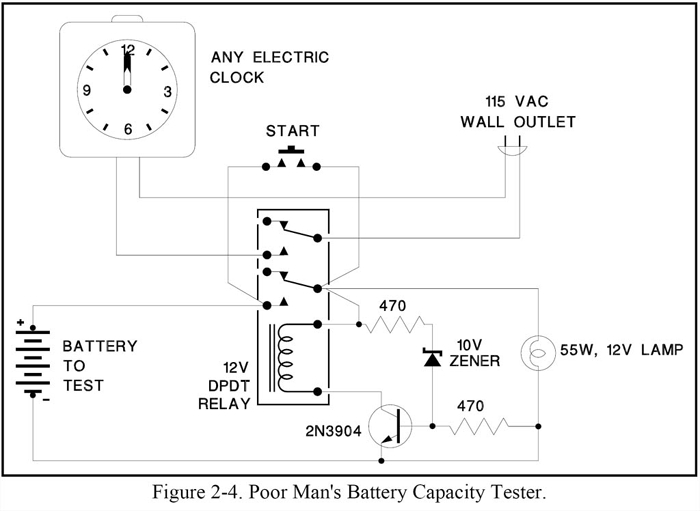
|
|
|
| Back to top |
|
 |
nuckolls.bob(at)aeroelect
Guest
|
 Posted: Sat Mar 03, 2012 3:24 pm Post subject: battery chargers Posted: Sat Mar 03, 2012 3:24 pm Post subject: battery chargers |
 |
|
At 12:29 PM 3/3/2012, you wrote:
Hi David,
I agree with you on the type of battery you mention. Although, I don't know anything about a $15 tender. If the electrolyte level gets low you can have an explosion. How do I know that?!!
Let us consider the Odyssey Technical Manual which
may be downloaded from:
http://www.odysseyfactory.com/documents/US-ODY-TM-001_0411_000.pdf
First, I searched for the word "explosion" and didn't find
it.
Next I searched for the word "damage" and I find it
5 times. The word is used 4 times in the context of
mechanical damage to the battery or damage to surroundings
due to leakage.
The 5th time is used on page 13 in the context of discussing
deep discharge recovery processes. Techniques that may be
successful in recovering a battery that has been BADLY
DISCHARGED without benefit of a timely recharge.
The tender in the link costs about $200 and is specific to the Odyssey. The Odyssey has a very slow self discharge rate compared to wet batteries, and shouldn't need to be charged unless there is a constant load of some kind on it.
Or it was put away in a discharged state . . . like you've
just spent the afternoon trolling, mowing the yard with
a DC electric lawn mower, etc. etc. In situations where
the battery is used to supply a major portion of it's
rated capacity on each discharge cycle, then recharging it
in a gentle, prescribed manner may be of some benefit
to service life. But consider the use in most automotive
applications including aircraft. You use 2 to 5% off the
top to get the engine started. Then the alternator stuffs
the energy back in at a prodigious rate set by what ever
the alternator supplies over and above the vehicle's
requirements.
After some period of operation, the battery is soon topped
of and presumably remains so until the next time the
battery master is flipped on during pre-flight. It' is
quite possible . . . nay probable that all batteries aboard
airplanes are never ministered to by precision chargers . . .
further, it's not clear how a battery would benefit from
attendance by a precision charger if you DID have AC
in the hangar and plugged the airplane in until the next
flight. The particularly robust nature of the AGM battery
was cited by another reader who offered:
It would have to extend it by a lot of months to pay for itself. My last PC680 lasted 5 years without any help from a battery tender. That includes sitting for 3 or 4 weeks at a time during the Indiana winters with no charger at all. I finally replaced it even though it was still cranking my IO-360 fine, even on some hot starts that took 15 or 20 seconds. I was starting to worry that the vibration could be getting to it. I didn't want it to blow up!!
You could buy another battery for less than the price of the battery tender. Am I missing something here?
Concerns for blowing up AGM batteries have no foundation
in physics of design or fact of service. The majority
of liberated oxygen and hydrogen gasses never get out of
the mats else they would not be available for recombination.
I would encourage interested readers to compare the recommended
3-step charge profiles for AGM batteries. By the way, the
Odyssey is but one of MANY AGM products all of which will
benefit from the same sort of (Step 1) CC charge, (Step 2)
CV top-off, (Step 3) CV sustenance at just over the open-circuit
terminal voltage so as to offset self-discharge currents.
The product literature shown at
http://tinyurl.com/745n3tr
gives rise to a number of questions.
(1) Exactly what is meant by "aviation specific"?
The percentage of batteries used in airplanes compared
to all other applications is a spit in the ocean.
Exactly what makes the battery worthy of $200 chargers
just because it's bolted to an airplane?
(2) Then there is the "Odyssey specific" thing. I spent
a day touring the Enersys facilities in Mexico, MO a
few years back. Got to walk through the highly automated
factory and spend several hours in a conference room drinking
their sodas while a bevy of engineers and marketing people
assured me and my colleagues that the Enersys products were
drop-in replacements for Gill, Concorde, Rebatt . . . you
name it. Not one individual mentioned anything about special
considerations for Enersys products bolted to airplanes or
chargers necessary to maximize service life of an Odyssey
product.
In fact, aside from their 'pure lead' plates and highly
automated manufacturing processes, there were no claims
to fame other than absolute quality in comparison with
other AGM products . . . no special treatments expected.
(3) Then there's that "desulfator-conditioner" thing.
Skipp Koss and I have discussed the marketing hype
phenomenon surrounding so-called desulfation techniques.
A battery that is badly discharged and allowed to sit
will indeed suffer from the effects of large crystal
formation that degrades the battery's performance. The
deep discharge recovery techniques described in the Odyssey
manual cited above are about word for word equal to the
techniques described by Concorde (and I presume others).
The "aviation specific" device described does not claim
to conform with those recovery techniques. The word "sulfate"
is not mentioned in any context in the Odyssey manual.
Wikipedia speaks rather well to the sulfation process
here:
http://en.wikipedia.org/wiki/Desulfation#Sulfation_and_desulfation
But in particular, consider these statements . . .
"Sulfation can be avoided if the battery is fully recharged immediately after a discharge cycle."
and this one . . .
SLI batteries (starting, lighting, ignition; i.e. car batteries) have less deterioration because they are used more frequently vs deep cycle batteries. Deep cycle batteries tend to require more desulfation, can suffer from overcharging, and can be in a very large bank which leads to unequal charging and discharging.
As discussed earlier, it's a design goal to (1) use very
little of the battery's capacity to star the engine
followed by (2) a recharge event whereupon the battery is
(3) held in a high state of charge as a reserve source
of energy in the event of alternator failure.
In this type of service, the battery can be expected to
perform for hundreds of flight cycles as long as the
battery is not put away in a degraded state of charge.
(4) Then there's the guarantee:
"We guarantee to significantly increase both your battery's life and performance
or we will refund 100% of your money within one (1) full year. This is in
addition to our five (5) year "no hassle" warranty."
Not sure what all that means . . . but exactly how
is John Q Public pilot supposed to make a quantitative
evaluation the this charger's performance as he chooses
to use it on his airplane? Without having laboratory
grade data on batteries that failed too soon to compare
with batteries blessed with their "aviation specific" charger,
how would the dissatisfied consumer have a basis for
complaint?
(5) Then there's this notion that the battery being
put away in the hangar is suffering from any state of
discharge that calls for a kinder-gentler-precision
recharge.
(6) Finally, there's a statement in the Odyssey manual
to the effect . . .
"Small, portable automotive and powersport chargers may also be used to charge your ODYSSEY battery. These chargers are generally designed to bring a discharged battery to a state of charge (SOC) that is high enough to crank an engine. Once the engine is successfully cranked, its alternator should fully charge the battery. It is important to keep in mind the design limitations of these small chargers when using them."
and this. . .
"All ODYSSEY batteries can be quickly charged. The graph below shows their exceptional fast charge characteristics at a constant 14.7V for three levels of inrush current. These current levels are similar to the output currents of modern automotive alternators. Table 6 and Figure 7 show the capacity returned as a function of the magnitude of the inrush current."
"Standard internal combustion engine alternators with an output voltage of 14.2V can also charge these batteries. The inrush current does not need to be limited under constant voltage charge. However, because the typical alternator voltage is only 14.2V instead of 14.7V, the charge times will be longer than those shown in Table 5."
and finally this . . .
"Another class of chargers is designed specifically to maintain a battery in a high SOC. These chargers, normally in the 3/4 amp to 11/2 amp range, are not big enough to charge a deeply discharged ODYSSEY® battery. They must only be used either to continuously compensate for parasitic losses or to maintain a trickle charge on a stored battery, as long as the correct voltages are applied. It is very important, therefore, to ensure that the ODYSSEY battery is fully charged before this type of charger is connected to it."
From Odyssey's own literature, we find that their
batteries can be charged under a host of protocols
as long as limits are observed. I'll argue that the
last paragraph is misleading . . .
I've used Battery Tenders for years that only put
out 3/4 of an amp or so. While under the supervision
of one of these chargers I get these behaviors
http://www.aeroelectric.com/Pictures/Curves/Battery_Tender_Recharge.pdf
with a 1.5 Schumacher I get this
http://www.aeroelectric.com/Pictures/Curves/schumacher_3.jpg
When cap-checked after being on one of these chargers,
I've had no indication whatsoever that the batteries
were incompletely charged.
I cannot see that the performance of these chargers is
inconsistent with what I read in the Odyssey technical
literature (or anyone else's for that matter. As to these
devices being "too small" . . . I put a fully charged 33 AH
AGM battery on a 100 mA constant current source and in less
than 2 minutes, the terminal voltage rose to over 15 volts.
I put the battery on a 14.7 constant voltage and in
a few minutes, the charge current had fallen to under
100 mA. From this I infer that ANY size charter is
probably capable of reaching and holding a top-off
level of 14.2 to 14.7 volts and dropping to a maintaining
level of 13.2 or so based on a nominal 'trigger' current
for calling the battery charged.
The point being that small chargers are capable of
boosting the terminal voltage to the ranges recommended
by Odyssey and others . . . it may just take more time.
Bottom line is that for the way we use batteries in cars
and airplanes (small percentage discharge cycles),
there is little benefit for having any sort of charger
. . . and at most, a $30 wall-wart Battery Tender or
this $20 Schumacher from WalMart will suffice.
[img]cid:.0[/img]
The whole "aviation specific" and "desulfation" business
is lacking foundation for either effectiveness or necessity.
Further, specialized recharging protocols are indicated
when trying to recover a badly depleted battery . . . but
not when putting your airplane away at the end of the day.
Bob . . .
| | - The Matronics AeroElectric-List Email Forum - | | | Use the List Feature Navigator to browse the many List utilities available such as the Email Subscriptions page, Archive Search & Download, 7-Day Browse, Chat, FAQ, Photoshare, and much more:
http://www.matronics.com/Navigator?AeroElectric-List |
|
| Description: |
|
| Filesize: |
14.34 KB |
| Viewed: |
7558 Time(s) |
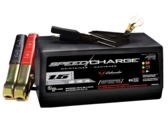
|
|
|
| Back to top |
|
 |
Hopperdhh(at)aol.com
Guest
|
 Posted: Sun Mar 04, 2012 5:43 am Post subject: battery chargers Posted: Sun Mar 04, 2012 5:43 am Post subject: battery chargers |
 |
|
Hi Bob,
The explosion I mentioned was in reference to a flooded battery, not an Odyssey. I once put a charger on my tractor and forgot about it. A few weeks later I found part of the battery case about 10 feet from the tractor. The rest of the battery was still in the tractor battery box with the innards showing! I assume that when the electrolyte got below the top of the plates that some conductive debris shorted between them and set off the oxygen/hydrogen explosion. This experience has caused me to be leery of battery tenders. This could happen with even a 1/2 amp charger because the energy that makes the spark comes from the battery, not the charger.
Thanks for the excellent information in your post on battery chargers.
Dan
RV-7A 766DH
In a message dated 3/3/2012 6:25:21 P.M. Eastern Standard Time, nuckolls.bob(at)aeroelectric.com writes:
| Quote: | At 12:29 PM 3/3/2012, you wrote:
Hi David,
I agree with you on the type of battery you mention. Although, I don't know anything about a $15 tender. If the electrolyte level gets low you can have an explosion. How do I know that?!!
Let us consider the Odyssey Technical Manual which
may be downloaded from:
http://www.odysseyfactory.com/documents/US-ODY-TM-001_0411_000.pdf
First, I searched for the word "explosion" and didn't find
it.
Next I searched for the word "damage" and I find it
5 times. The word is used 4 times in the context of
mechanical damage to the battery or damage to surroundings
due to leakage.
|
[quote][b]
| | - The Matronics AeroElectric-List Email Forum - | | | Use the List Feature Navigator to browse the many List utilities available such as the Email Subscriptions page, Archive Search & Download, 7-Day Browse, Chat, FAQ, Photoshare, and much more:
http://www.matronics.com/Navigator?AeroElectric-List |
|
|
|
| Back to top |
|
 |
ainut(at)knology.net
Guest
|
 Posted: Sun Mar 04, 2012 10:08 am Post subject: battery chargers Posted: Sun Mar 04, 2012 10:08 am Post subject: battery chargers |
 |
|
During charging, offgases are produced. If those gasses collect
somewhere, a spark can indeed set them off. Yes, thay can collect
inside the battery itself. Several RV batteries have been blown up that
way so I assume that it happens all over the place. Happened to me once
and my battery compartment is well ventilated.
David M.
Hopperdhh(at)aol.com wrote:
[quote] Hi Bob,
The explosion I mentioned was in reference to a flooded battery, not
an Odyssey. I once put a charger on my tractor and forgot about it.
A few weeks later I found part of the battery case about 10 feet from
the tractor. The rest of the battery was still in the tractor battery
box with the innards showing! I assume that when the electrolyte got
below the top of the plates that some conductive debris shorted
between them and set off the oxygen/hydrogen explosion. This
experience has caused me to be leery of battery tenders. This could
happen with even a 1/2 amp charger because the energy that makes the
spark comes from the battery, not the charger.
Thanks for the excellent information in your post on battery chargers.
Dan
RV-7A 766DH
In a message dated 3/3/2012 6:25:21 P.M. Eastern Standard Time,
nuckolls.bob(at)aeroelectric.com writes:
At 12:29 PM 3/3/2012, you wrote:
Hi David,
I agree with you on the type of battery you mention. Although, I
don't know anything about a $15 tender. If the electrolyte level
gets low you can have an explosion. How do I know that?!!
------
| | - The Matronics AeroElectric-List Email Forum - | | | Use the List Feature Navigator to browse the many List utilities available such as the Email Subscriptions page, Archive Search & Download, 7-Day Browse, Chat, FAQ, Photoshare, and much more:
http://www.matronics.com/Navigator?AeroElectric-List |
|
|
|
| Back to top |
|
 |
skywagon
Joined: 11 Feb 2006
Posts: 184
|
 Posted: Sun Mar 04, 2012 10:15 am Post subject: battery chargers Posted: Sun Mar 04, 2012 10:15 am Post subject: battery chargers |
 |
|
Hi Dan,
I am wondering if the issue is confusing the design ideas of a "Tender or Maintainer" with a garden variety battery charger of the small 0.5 amp (or less) varieties.
Tenders or Maintainers have a pre-set cut off voltage, then set themselves to a set "float" voltage that is considerably lower than any battery damage causing charge voltage. Even the tiny Harbor Freight unit, usually on sale for less than $10, charges to a preset-'able'(*) limit and then backs off to a float voltage. Once in the float voltage mode they can be left on indefinitely on any good 12 v. battery.
The old fashion battery chargers, even the low amp units, must be taken off line in a definite time period or they keep charging past their labeled charge to usually the peak voltage of the rectified AC. It's been a while since I thought about this number, but, I think it can go to about 18 volts. So, case in point, a small 0.5 amp charger could keep jamming current into an unattended battery until it got to 18 volts. Even, at a small 0.5 amps that battery is going to heat up, gas out and otherwise possible due weird stuff. I can't see it exploding without some other form of ignition but, it could certainly gas out and become useless.....
Dave
(*) The cheap HF maintainers have inside the small plastic control box, a circuit board mounted potentiometer. The back can be popped off the box and the float voltage can be adjusted for custom settings. I like about 13.1 v. for the float charging on 12v. batteries. CW lowers the voltage and CCW raises it...
[quote] ---
| | - The Matronics AeroElectric-List Email Forum - | | | Use the List Feature Navigator to browse the many List utilities available such as the Email Subscriptions page, Archive Search & Download, 7-Day Browse, Chat, FAQ, Photoshare, and much more:
http://www.matronics.com/Navigator?AeroElectric-List |
|
|
|
| Back to top |
|
 |
earl_schroeder(at)juno.co
Guest
|
 Posted: Sun Mar 04, 2012 12:19 pm Post subject: battery chargers Posted: Sun Mar 04, 2012 12:19 pm Post subject: battery chargers |
 |
|
Hi Dave,
You wrote:
"(*) The cheap HF maintainers have inside the small plastic control box, a circuit board mounted potentiometer. The back can be popped off the box and the float voltage can be adjusted for custom settings. I like about 13.1 v. for the float charging on 12v. batteries. CW lowers the voltage and CCW raises it..."
Unfortunately, the most recent purchases I've made do NOT include the adjustable resistor you mentioned. They have replaced the 'pot' with a fixed resistor....
One can find the potentiometers at the usual places (on line) and I've replaced several fixed resistors already.
I've now switched from the HF varieties to the Walmart ones discussed here. I have one per building and after the most recent used battery is recharged, I just parallel it with the other 12v batteries in that area. Works good for me!
Earl
[quote][b]
| | - The Matronics AeroElectric-List Email Forum - | | | Use the List Feature Navigator to browse the many List utilities available such as the Email Subscriptions page, Archive Search & Download, 7-Day Browse, Chat, FAQ, Photoshare, and much more:
http://www.matronics.com/Navigator?AeroElectric-List |
|
|
|
| Back to top |
|
 |
skywagon
Joined: 11 Feb 2006
Posts: 184
|
 Posted: Sun Mar 04, 2012 4:04 pm Post subject: battery chargers Posted: Sun Mar 04, 2012 4:04 pm Post subject: battery chargers |
 |
|
Earl,
Interesting that Harbor Freight's little unit has eliminated the pot.
I bought 6 of them last year at Oshkosh (super price) and they all have pots. Guess I need to be careful with them.
Thanks,
Dave
[quote] ---
| | - The Matronics AeroElectric-List Email Forum - | | | Use the List Feature Navigator to browse the many List utilities available such as the Email Subscriptions page, Archive Search & Download, 7-Day Browse, Chat, FAQ, Photoshare, and much more:
http://www.matronics.com/Navigator?AeroElectric-List |
|
|
|
| Back to top |
|
 |
Hopperdhh(at)aol.com
Guest
|
 Posted: Sun Mar 04, 2012 5:08 pm Post subject: battery chargers Posted: Sun Mar 04, 2012 5:08 pm Post subject: battery chargers |
 |
|
I didn't mean to confuse the issue.
My tractor battery that exploded was being charged by a simple 10 A charger with just a transformer and diodes in it. It probably would not have happened with a charger/tender/maintainer with some circuitry in it to limit the float voltage to a reasonable value. My charger was probably putting out a little current even after the battery charged up to 16 volts or more. Not a good idea to leave it on charge for several weeks!! It was winter time and I simply forgot all about it. Glad it wasn't my airplane!
My point was that it is possible to cause big problems if the circuit were to fail and allow the voltage to go high enough long enough to lose the electrolyte. Its a good idea to keep a check on the electrolyte level (assuming a flooded battery) for that reason. I don't like the idea of leaving the airplane in the hangar 8 miles away with no easy way to check on it every day or two. Electronics is wonderful -- most of the time. I have repaired a few pieces of made-in-China electronic junk that I wouldn't trust on my airplane. I'm thinking of toys and Christmas lights/ornaments, etc. If the workmanship on the battery tender is like that, forget it!
Dan
In a message dated 3/4/2012 1:16:27 P.M. Eastern Standard Time, skywagon(at)charter.net writes:
[quote] Hi Dan,
I am wondering if the issue is confusing the design ideas of a "Tender or Maintainer" with a garden variety battery charger of the small 0.5 amp (or less) varieties.
Tenders or Maintainers have a pre-set cut off voltage, then set themselves to a set "float" voltage that is considerably lower than any battery damage causing charge voltage. Even the tiny Harbor Freight unit, usually on sale for less than $10, charges to a preset-'able'(*) limit and then backs off to a float voltage. Once in the float voltage mode they can be left on indefinitely on any good 12 v. battery.
The old fashion battery chargers, even the low amp units, must be taken off line in a definite time period or they keep charging past their labeled charge to usually the peak voltage of the rectified AC. It's been a while since I thought about this number, but, I think it can go to about 18 volts. So, case in point, a small 0.5 amp charger could keep jamming current into an unattended battery until it got to 18 volts. Even, at a small 0.5 amps that battery is going to heat up, gas out and otherwise possible due weird stuff. I can't see it exploding without some other form of ignition but, it could certainly gas out and become useless.....
Dave
(*) The cheap HF maintainers have inside the small plastic control box, a circuit board mounted potentiometer. The back can be popped off the box and the float voltage can be adjusted for custom settings. I like about 13.1 v. for the float charging on 12v. batteries. CW lowers the voltage and CCW raises it...
[quote] ---
| | - The Matronics AeroElectric-List Email Forum - | | | Use the List Feature Navigator to browse the many List utilities available such as the Email Subscriptions page, Archive Search & Download, 7-Day Browse, Chat, FAQ, Photoshare, and much more:
http://www.matronics.com/Navigator?AeroElectric-List |
|
|
|
| Back to top |
|
 |
nuckolls.bob(at)aeroelect
Guest
|
 Posted: Mon Mar 05, 2012 5:02 pm Post subject: battery chargers Posted: Mon Mar 05, 2012 5:02 pm Post subject: battery chargers |
 |
|
At 07:41 AM 3/4/2012, you wrote:
| Quote: |
Hi Bob,
The explosion I mentioned was in reference to a flooded battery, not an Odyssey. I once put a charger on my tractor and forgot about it. A few weeks later I found part of the battery case about 10 feet from the tractor. The rest of the battery was still in the tractor battery box with the innards showing! I assume that when the electrolyte got below the top of the plates that some conductive debris shorted between them and set off the oxygen/hydrogen explosion. This experience has caused me to be leery of battery tenders. This could happen with even a 1/2 amp charger because the energy that makes the spark comes from the battery, not the charger.
Thanks for the excellent information in your post on battery chargers. |
Oh yeah . . . I've seen flooded batteries do a
steam explosion . . . or more like a volcano
eruption too. A good friend of mine worked in
the Naval Battery Labs at Crane, IN. Those
labs are a kind of battery-hell. Many folks
(especially submariners) wont qualify a battery
until Crane sez, "they can't blow it up."
She sent me some videos of some rather spectacular
'batterycides'.
I am aware of only one in-service RG battery explosion.
It was a new model Concorde being qualified onto
a GA jet. This particular battery had been subjected to some
severe conditions of overcharging followed by
a couple of spool-ups (no ignition or fuel) on
the airplane. The evolved gasses combined with
some simulated balked starts fused a cross-over
joint between cells . . .
[img]cid:.0[/img]
Concorde's crossovers are soldered on by hand . . .
[img]cid:.1[/img]
. . . and set high enough on the cell wall to become immersed in
epoxy encapsulant which is used to fill the inter-cell sealing
channels in the lid . . .
[img]cid:.2[/img]
Interestingly enough, this battery design had already been
qualified to the RTCA/TSO requirements . . . which seem not
to stress a battery as hard as in the incident aircraft.
Even though analysis of the event said it was not necessary,
Concorde did beef up the inter-cell connectors in that model
of battery.
We have been apprised of an incidence of a high-energy,
internal event on a Hawker 10 AH 24V battery . . .
[img]cid:.3[/img]
Temperatures were so high as to severely char the internals
[img]cid:.4[/img]
. . . I think this event stayed inside the battery case except
for one small hole.
I wasn't informed of the history of this even but given the
battery's small size (10 a.h.) and the size of the typical
24v alternator (60A) I'm betting that the short term high
recharge rates for this battery were exceeded causing
a failure of the one cell.
The RG or SVLA battery has amassed a long history of
robust service and few exceptions for more than benign
failures . . . and they get better all the time.
Bob . . .
| | - The Matronics AeroElectric-List Email Forum - | | | Use the List Feature Navigator to browse the many List utilities available such as the Email Subscriptions page, Archive Search & Download, 7-Day Browse, Chat, FAQ, Photoshare, and much more:
http://www.matronics.com/Navigator?AeroElectric-List |
|
| Description: |
|
| Filesize: |
266.48 KB |
| Viewed: |
7531 Time(s) |
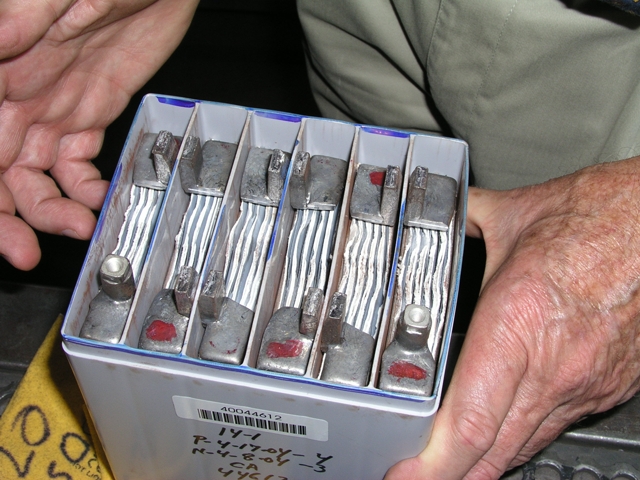
|
| Description: |
|
| Filesize: |
249.46 KB |
| Viewed: |
7531 Time(s) |
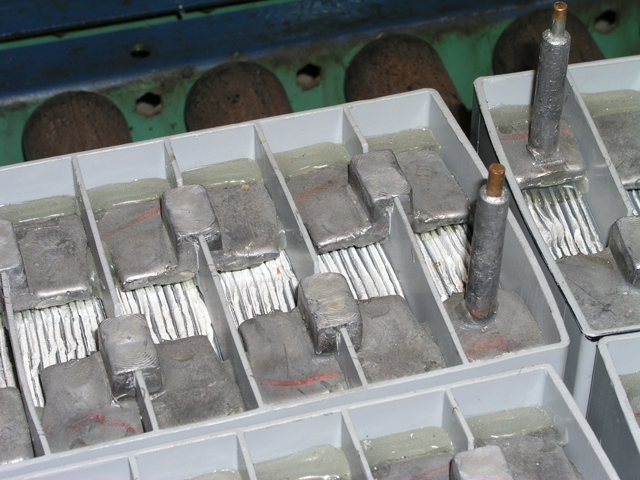
|
| Description: |
|
| Filesize: |
288.11 KB |
| Viewed: |
7531 Time(s) |
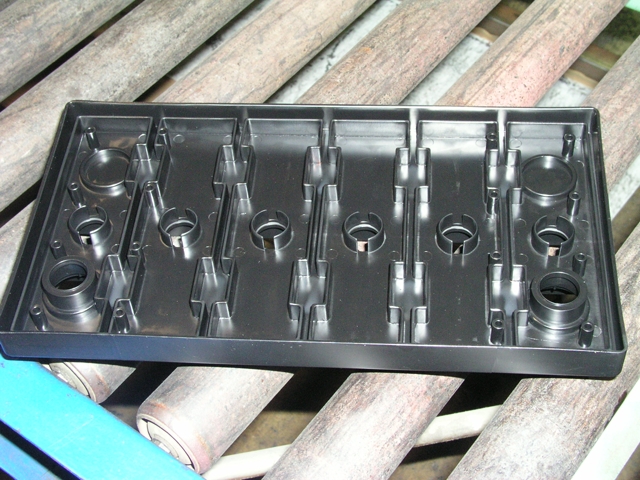
|
| Description: |
|
| Filesize: |
210.84 KB |
| Viewed: |
7531 Time(s) |
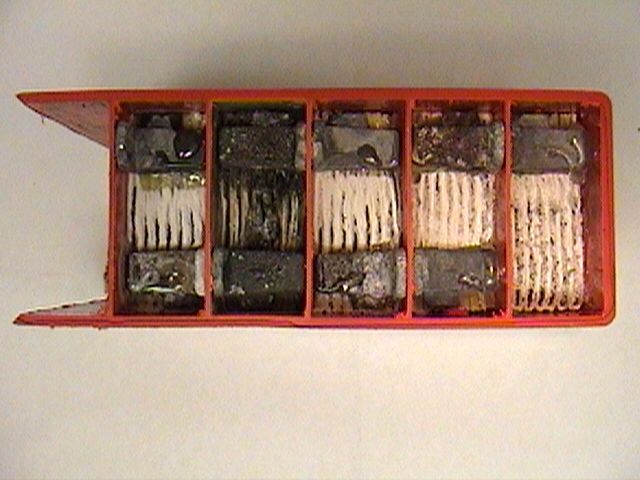
|
| Description: |
|
| Filesize: |
97.61 KB |
| Viewed: |
7531 Time(s) |
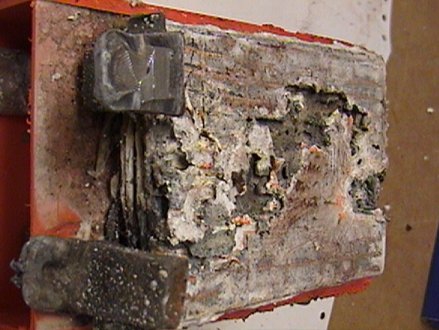
|
|
|
| Back to top |
|
 |
nuckolls.bob(at)aeroelect
Guest
|
 Posted: Mon Mar 05, 2012 5:30 pm Post subject: battery chargers Posted: Mon Mar 05, 2012 5:30 pm Post subject: battery chargers |
 |
|
At 11:40 AM 3/4/2012, you wrote:
| Quote: | --> AeroElectric-List message posted by: David <ainut(at)knology.net>
During charging, offgases are produced. If those gasses collect somewhere, a spark can indeed set them off. Yes, thay can collect inside the battery itself. Several RV batteries have been blown up that way so I assume that it happens all over the place. Happened to me once and my battery compartment is well ventilated.
David M, |
Was there any sort of failure analysis done? Pictures
taken? An RG battery stressed so hard as to produce
gasses not contained in the mats combined with some
spark-producing condition begs for answers as to root
cause. I would be reluctant to assume that it 'happens
all over the place' . . . yours is the first mention
of explosive de-construction of a battery here on
the List in many years.
I was aware of a battery box explosion in a GlasAir
wherein the battery box provided containment and
a battery contactor provided ignition. But even that
event was poorly documented and no mention was made
of what was probably a sustained OV event that cooked
the battery.
Somebody sent me an abused Odyssey some years back,
Dec 2005 I think. I sent it to Concorde and their guys
tore it down for closer examination.
In this case, the battery case was intact. The battery had
be subject to an OV condition which heated the battery up
while building large sulfation crystals on the normally thin
plates. The thing puffed up like a guppy.
[img]cid:.0[/img]
[img]cid:.1[/img]
RG batteries are not designed to withstand severe over-charging
or extra-ordinary stress such as that which produced the
one real explosion I'm aware of. After running the gauntlets at
TSO or Naval qualification labs, they are shown to offer benign
failure events when used in a system with legacy attention paid to
rapid mitigation of an OV event.
If anyone becomes aware of what appears to have been an explosive
rupture of an RG battery, please let me know about it ASAP. I'll
pay for pictures, a narrative of conditions leading up to the event
and pay the shipping for the carcass. These things need to be
examined by folks who are very good at it so as to broaden our
understanding and improvement on the best we know how to do.
Bob . . .
| | - The Matronics AeroElectric-List Email Forum - | | | Use the List Feature Navigator to browse the many List utilities available such as the Email Subscriptions page, Archive Search & Download, 7-Day Browse, Chat, FAQ, Photoshare, and much more:
http://www.matronics.com/Navigator?AeroElectric-List |
|
| Description: |
|
| Filesize: |
117.57 KB |
| Viewed: |
7531 Time(s) |
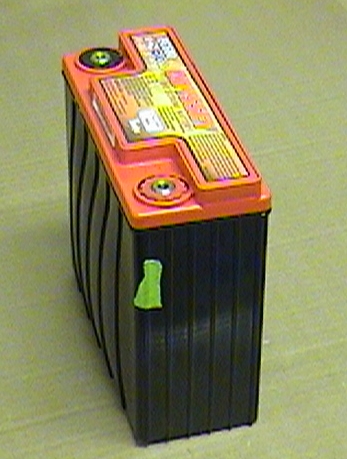
|
| Description: |
|
| Filesize: |
203.19 KB |
| Viewed: |
7531 Time(s) |
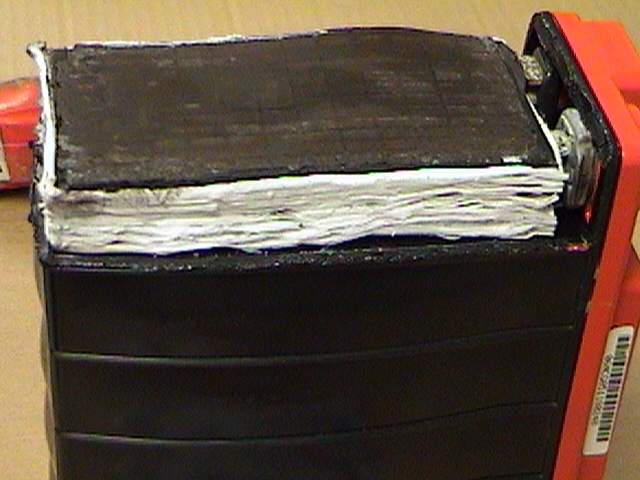
|
|
|
| Back to top |
|
 |
ainut(at)knology.net
Guest
|
 Posted: Thu Mar 08, 2012 8:52 am Post subject: battery chargers Posted: Thu Mar 08, 2012 8:52 am Post subject: battery chargers |
 |
|
The explosions I referred to were in the recreational vehicles (RV)
world, not in aviation. In mine, I was using a state-of-the-art mounted
charger ( as of 1986!) and did not watch the batteries closely enough so
definitely an over-charging situation caused this. I have since
replaced it with a more modern unit that has float charging capability.
The old one could vary charging rate a little but was always pushing
electrons into the batteries.
David M.
Robert L. Nuckolls, III wrote:
| Quote: | At 11:40 AM 3/4/2012, you wrote:
>
>
> During charging, offgases are produced. If those gasses collect
> somewhere, a spark can indeed set them off. Yes, thay can collect
> inside the battery itself. Several RV batteries have been blown up
> that way so I assume that it happens all over the place. Happened to
> me once and my battery compartment is well ventilated.
>
> David M,
Was there any sort of failure analysis done? Pictures
taken? An RG battery stressed so hard as to produce
gasses not contained in the mats combined with some
spark-producing condition begs for answers as to root
<<<snip>>>
|
| | - The Matronics AeroElectric-List Email Forum - | | | Use the List Feature Navigator to browse the many List utilities available such as the Email Subscriptions page, Archive Search & Download, 7-Day Browse, Chat, FAQ, Photoshare, and much more:
http://www.matronics.com/Navigator?AeroElectric-List |
|
|
|
| Back to top |
|
 |
|
|
You cannot post new topics in this forum
You cannot reply to topics in this forum
You cannot edit your posts in this forum
You cannot delete your posts in this forum
You cannot vote in polls in this forum
You cannot attach files in this forum
You can download files in this forum
|
Powered by phpBB © 2001, 2005 phpBB Group
|











